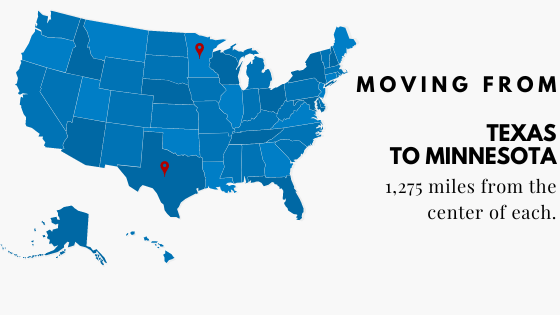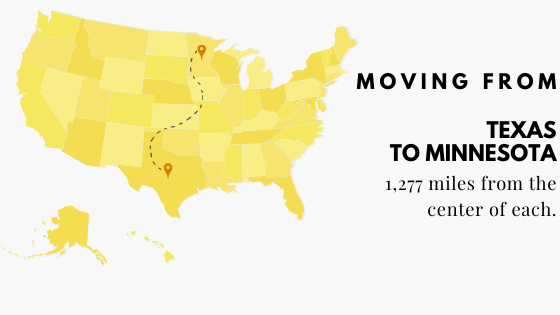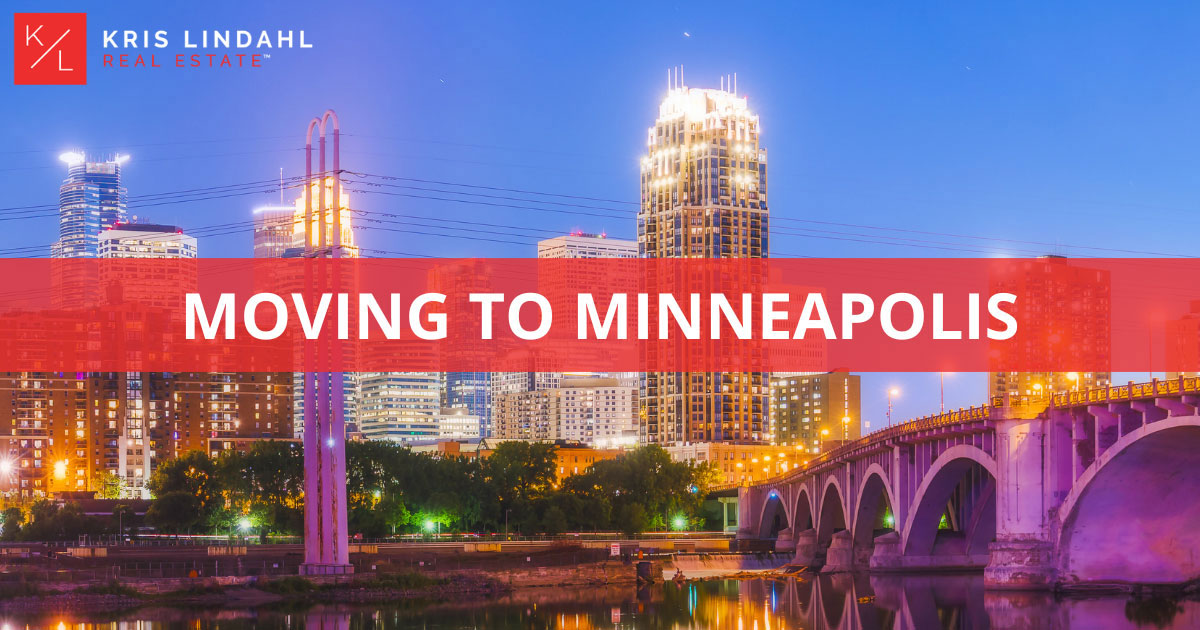Moving From Texas To Minneapolis
As the doors of opportunity swing open, many Texans are finding themselves drawn to the charms of Minneapolis, Minnesota. Leaving behind the Lone Star State's vast desert landscapes and cowboy culture, they're trading in their boots for snow boots and embracing the vibrant atmosphere of the Twin Cities. But what makes Minneapolis such an attractive destination for Texans? Is it the city's thriving job market, its rich cultural scene, or perhaps the promise of a fresh start in a new region? Whatever the reason, making the move from Texas to Minneapolis requires careful consideration and planning.

Leaving the Lone Star State Behind: A Guide to Moving from Texas to Minneapolis
When deciding to move from Texas to Minneapolis, it's essential to prepare for the significant changes you'll encounter in climate, culture, and lifestyle. Minneapolis, the largest city in Minnesota, offers a unique blend of urban excitement and natural beauty, but it's crucial to understand what to expect before making the transition.
Climate Shock: Adapting to Minneapolis' Frigid Winters
One of the most significant adjustments you'll face when moving from Texas to Minneapolis is the harsh winter climate. Minneapolis experiences extremely cold temperatures, with average lows ranging from 14°F to -2°F (-10°C to -19°C) during the winter months. Be prepared to invest in warm clothing, including a heavy coat, gloves, hats, and scarves. Additionally, make sure your vehicle is winter-ready, with features like snow tires and a remote start.
Cost of Living: What to Expect in Minneapolis
Compared to Texas, Minneapolis has a relatively high cost of living. The median home price in Minneapolis is around $270,000, which is significantly higher than the median home price in Texas. You'll also notice an increase in taxes, with Minnesota having a higher state income tax rate than Texas. However, Minneapolis offers a range of neighborhoods and housing options, from affordable apartments to luxurious homes, so it's essential to research and budget accordingly.
Job Market and Industry: Opportunities in Minneapolis
Minneapolis is home to a thriving job market, with major industries in healthcare, technology, and manufacturing. The city is headquarters to several Fortune 500 companies, including UnitedHealth Group, 3M, and Target Corporation. Additionally, Minneapolis has a strong startup scene, with many opportunities for entrepreneurs and small business owners. If you're moving for work, research the major companies in your industry and network with professionals in the area.
Cultural Differences: Embracing the Midwest Lifestyle
Minneapolis has a distinct cultural identity that's different from Texas. The city is known for its friendly, down-to-earth residents, and you'll notice a strong sense of community throughout the city. Be prepared to adapt to a more laid-back pace of life, with a focus on outdoor activities, local cuisine, and neighborhood events. Minneapolis is also home to a vibrant arts scene, with numerous galleries, museums, and performance venues.
Getting Around: Transportation Options in Minneapolis
Minneapolis has a well-developed public transportation system, including buses and light rail lines. The city is also bike-friendly, with numerous bike lanes and trails throughout the city. If you prefer to drive, be prepared for winter road conditions and potential parking challenges in popular neighborhoods. Research the different transportation options and choose the one that best fits your lifestyle and budget.
| Category | Texas | Minneapolis |
|---|---|---|
| Median Home Price | $193,000 | $270,000 |
| State Income Tax Rate | 0% | 7.25% |
| Average Winter Temperature | 48°F (9°C) | 24°F (-4°C) |
| Unemployment Rate | 3.4% | 3.2% |
Why are Texans moving to Minnesota?

The phenomenon of Texans moving to Minnesota might seem surprising at first, given the vastly different climates and cultural identities of the two states. However, there are several reasons why Texans are increasingly calling the North Star State home.
Economic Opportunities
One major draw for Texans is Minnesota's thriving economy. The state boasts a strong job market, with major industries in healthcare, technology, and manufacturing. Additionally, Minnesota is home to several Fortune 500 companies, including UnitedHealth Group, 3M, and Target. This provides a range of employment opportunities for Texans looking to advance their careers or start anew.
Quality of Life
Minnesota offers a higher quality of life compared to Texas in several aspects. The state is known for its excellent public education system, with several top-ranked universities and schools. Additionally, Minnesota has a lower crime rate and a more relaxed pace of life, which can be appealing to Texans looking to escape the hustle and bustle of city life.
Natural Beauty and Outdoor Activities
Minnesota's natural beauty and outdoor recreational opportunities are also major attractions for Texans. The state is home to 10,000 lakes, numerous parks, and the Mississippi River, providing endless opportunities for outdoor activities like fishing, hiking, and skiing. This is a significant change of pace for Texans, who are used to the dry, desert landscapes of their home state.
Is it cheaper to live in Minnesota or Texas?

The cost of living in Minnesota versus Texas depends on several factors, including housing, food, transportation, and lifestyle. Here's a breakdown of the costs:
Cost of Housing
The cost of housing is one of the most significant factors in determining the affordability of a place. In Minnesota, the median home price is around $270,000, while in Texas, it's around $240,000. However, the cost of housing varies widely depending on the location. For example, in Minneapolis, Minnesota, the median home price is around $340,000, while in Austin, Texas, it's around $390,000.
Housing costs in Minnesota:
+ Median home price: $270,000
+ Average rent for a 1-bedroom apartment: $1,300/month
+ Average rent for a 3-bedroom house: $1,800/month
Housing costs in Texas:
+ Median home price: $240,000
+ Average rent for a 1-bedroom apartment: $1,100/month
+ Average rent for a 3-bedroom house: $1,500/month
Food and Transportation Costs
Food and transportation costs are another important factor in determining the cost of living. In Minnesota, the average cost of groceries is around 10% higher than the national average, while in Texas, it's around 5% lower. When it comes to transportation, Texas has a lower gas tax rate than Minnesota, which means that Texans pay less at the pump.
Food costs in Minnesota:
+ Average cost of groceries: 10% higher than the national average
+ Average cost of a meal at a mid-range restaurant: $15-20 per person
Food costs in Texas:
+ Average cost of groceries: 5% lower than the national average
+ Average cost of a meal at a mid-range restaurant: $12-18 per person
Transportation costs:
+ Gas tax rate in Minnesota: 28.5 cents per gallon
+ Gas tax rate in Texas: 20 cents per gallon
+ Average cost of a gallon of gas: $2.50 (varies by location)
Lifestyle and Taxes
Lifestyle and taxes are also important considerations when deciding which state to live in. Minnesota has a higher state income tax rate than Texas, which means that Minnesotans pay more in taxes. However, Minnesota also offers a more comprehensive social safety net and a higher level of public services.
State income tax rates:
+ Minnesota: 9.85% (top marginal rate)
+ Texas: 0% (no state income tax)
Lifestyle costs:
+ Average cost of a movie ticket: $10-15
+ Average cost of a gym membership: $30-50 per month
+ Average cost of a bottle of wine: $10-20
How much would it cost to move from Texas to Minnesota?

The cost of moving from Texas to Minnesota can vary greatly depending on several factors, including the distance, weight, and type of items being moved, as well as the services required. Here's a breakdown of the estimated costs:
Moving Truck Rental Costs
Renting a moving truck is a cost-effective way to move, especially for smaller loads. The cost of truck rental varies depending on the distance and truck size. Here's an estimate of the costs:
- Truck size: A 26-foot truck, suitable for a 3-bedroom home, costs around $2,000-$3,000 for a one-way trip from Texas to Minnesota.
- Fuel costs: Fuel costs can range from $500-$1,000, depending on the truck's fuel efficiency and the distance.
- Additional fees: There may be additional fees for equipment rental, tolls, and parking, which can add up to $200-$500.
Professional Moving Company Costs
Hiring a professional moving company can be more expensive, but it offers convenience and peace of mind. The cost of hiring a moving company varies depending on the weight and distance of the move. Here's an estimate of the costs:
- Weight-based estimate: The average weight of a 3-bedroom home is around 10,000 pounds. The cost of moving 10,000 pounds from Texas to Minnesota can range from $4,000-$6,000.
- Distance-based estimate: The distance from Texas to Minnesota is around 1,200 miles. The cost of moving per mile can range from $2-$5, making the total cost around $2,400-$6,000.
- Packing services: If you require packing services, the cost can add up to $1,000-$2,000.
Portable Storage Container Costs
Portable storage containers offer a convenient and flexible moving option. The cost of portable storage containers varies depending on the container size and distance. Here's an estimate of the costs:
- Container size: A 16-foot container, suitable for a 3-bedroom home, costs around $2,500-$3,500 for a one-way trip from Texas to Minnesota.
- Delivery and pickup fees: There may be additional fees for delivery and pickup, which can range from $200-$500.
- Fuel costs: Fuel costs can range from $500-$1,000, depending on the distance.
Is it worth moving to Minneapolis?

Pros of Moving to Minneapolis
Minneapolis is a city that offers a great quality of life, with a mix of urban and natural environments. Here are some pros of moving to Minneapolis:
- Affordable Cost of Living: Compared to other major cities in the United States, Minneapolis has a relatively low cost of living. The city has a low unemployment rate, and the median home price is around $270,000.
- Excellent Education System: Minneapolis is home to the University of Minnesota, one of the top public universities in the country. The city is also served by a strong public school system, with several highly-rated schools and districts.
- Abundant Outdoor Activities: Minneapolis has an extensive park system, with over 180 parks and 97 miles of biking and walking trails. The city is also located near several lakes, including Lake Calhoun and Lake Harriet.
Cons of Moving to Minneapolis
While Minneapolis has its advantages, it's not without its drawbacks. Here are some cons to consider:
- Cold Winters: Minneapolis is known for its frigid winters, with temperatures often dropping below 0°F (-18°C). The city averages over 50 inches of snow per year, which can be challenging for some people.
- Traffic and Congestion: Minneapolis is a growing city, and with that comes increased traffic and congestion. The city's roads can be busy, especially during rush hour.
- High Sales Tax: Minnesota has a high sales tax rate of 7.63%, which can add to the cost of living in Minneapolis.
Things to Do in Minneapolis
Minneapolis is a city with a rich cultural scene and plenty of things to do. Here are some popular attractions and activities:
- Visit the Walker Art Center: A contemporary art center with rotating exhibits and installations.
- Explore the Mill District: A historic neighborhood with shops, restaurants, and bars, located along the Mississippi River.
- Take a Brewery Tour: Minneapolis is home to a thriving craft beer scene, with several popular breweries offering tours and tastings.
FAQ
What are the main differences between the cost of living in Texas and Minneapolis?
The cost of living in Minneapolis is generally higher compared to Texas. Housing costs, in particular, are significantly higher in Minneapolis, with the median home price being around $270,000 compared to around $190,000 in Texas. Additionally, taxes in Minneapolis are higher, with a combined state and local tax rate of around 10%, compared to around 8% in Texas. However, food prices are relatively similar, and transportation costs are actually lower in Minneapolis due to its more compact and walkable city design. Overall, it's essential to factor in these cost differences when planning your move to ensure a smooth transition.
How do I prepare for the cold Minnesota winters?
Preparing for the cold Minnesota winters is crucial when moving from Texas. Invest in warm clothing, such as a heavy coat, gloves, hats, and scarves, to stay warm and protected from the elements. Additionally, winterize your vehicle by checking your antifreeze, oil, and tires to ensure they can handle the freezing temperatures. Stock up on winter supplies, such as ice melt, snow shovels, and warm blankets, to be prepared for potential snowstorms. It's also a good idea to research winter activities, such as ice skating, skiing, or snowshoeing, to make the most of the winter season.
What are the job opportunities like in Minneapolis compared to Texas?
Minneapolis has a strong and diverse economy, with major industries in healthcare, technology, and manufacturing. The city is home to several Fortune 500 companies, including 3M, Target, and UnitedHealth Group, offering a range of job opportunities. While the unemployment rate in Minneapolis is slightly higher than in Texas, the city's economy is more diversified, which can provide more job security and opportunities for advancement. Additionally, the average salary in Minneapolis is higher than in Texas, which can help offset the higher cost of living.
What are some tips for adjusting to the culture shock of moving from Texas to Minneapolis?
Moving from Texas to Minneapolis can be a significant cultural adjustment. One of the main differences you'll notice is the Midwestern niceness culture, where people are generally more reserved and polite. Additionally, Minneapolis has a more urban and cosmopolitan atmosphere, with a strong focus on arts and culture. To adjust, try to be open-minded and willing to try new things, such as visiting the Walker Art Center or attending a Vikings game. Also, join local groups or clubs that align with your interests, which can help you meet new people and build a social network in your new city.